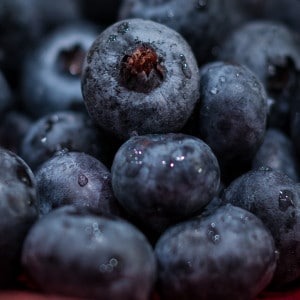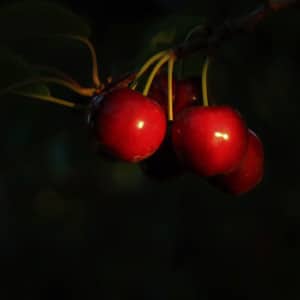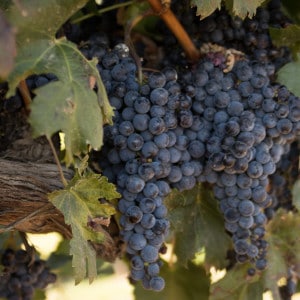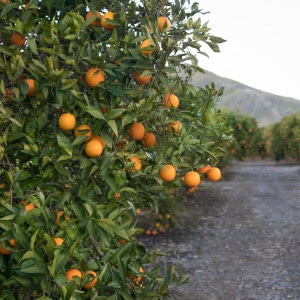Antioxidants are substances that can prevent or slow damage to cells caused by free radicals, unstable molecules the body produces as a reaction to environmental and other pressures. Certain fruits and vegetables are rich in antioxidants. If you want to increase your intake of antioxidants and prefer to get them through organically grown foods from your garden, this is the blog article for you.
A few years back, Tom Spellman suggested, “If you are going to grow plants in your garden, grow plants you like to eat.” An excellent suggestion, except there are so many fruits and vegetables that taste great. So, he takes it one step further and suggests we grow the food we like and is good for us. Fruits and vegetables high in antioxidants are the plants to grow in your backyard.
This video is a 30-minute conversation with Tom filled with great suggestions of plants to grow high in antioxidants and excellent tips to make sure they thrive.
Below is additional information from Tom to help you be more successful in growing plants high in antioxidants.
High antioxidant value fruits have become all the rage for home growers. Fruits high in these qualities provide many vitamins, minerals, and phytonutrients essential to general health and well-being. Most fruits and vegetables offer some antioxidant value. One common trait of most high antioxidant value fruit is dark, bright interior and exterior pigment color. Black, red, purple, and orange-colored fruits generally have the highest value.
Antioxidant values of most fruits are calculated using the ORAC scale (OXYGEN RADICAL ABSORBANCE CAPACITY). The following is a list with information on fruits containing some of the highest antioxidant ORAC values. The ORAC numbers represent the approximate values found in each fruit’s 3 to 4-ounce serving. The recommended daily intake of antioxidants is 3000 to 6000 ORAC units. Growing recommendations are also discussed.
Blueberries – 2500 ORAC
Blueberries require a fast-draining, high organic, acidic growing media, consisting of 1/3 peat moss, 1/3 ground bark, and 1/3 fast-draining potting soil. Full sun exposure is recommended, but blueberries will tolerate some afternoon shade. In the southwest, it is challenging to grow blueberries in the ground. Containers raised beds and mounded plantings using the recommended media will help to ensure success. Most blueberry varieties are self-fruitful.

However, it is best to plant at least three different varieties together for the best pollination and heavy fruiting. Blueberries fruit in the spring through mid-summer.
Prune to shape only in late summer after the fruiting season is complete. Late fall or winter pruning will result in the removal of fruiting wood for the next season. Feed blueberries lightly and frequently from February through September. Use a humic acid-based, low nitrogen, high phosphorus, and potassium fertilizer with trace elements. Soil sulfur can also be used occasionally to help keep the soil to an acidic PH.
Cane Berries – Blackberry 2050 ORAC, Boysenberry 1000 ORAC, Raspberry 1250 ORAC
Cane berries prefer a well-drained, moist soil condition and full sun exposure. Some late afternoon shade is acceptable. Cane berries are vines and should be supported on a trellis or post and wire system. Cane berries require annual rejuvenation. In the fall, cut out old canes that fruited through the previous summer. After summer, bring up all-new canes that grew out and affix them to the support system. These new canes will be your fruiting wood the following spring and summer. If growth is too dense, some thinning of canes is advised. Fertilize two to three times from February through June.
Cherries – 700 ORAC for Reds
Cherries require full sun exposure for the best quality fruit. Fast draining, sandy soil is best. If soil conditions are not optimal, a raised bed or mounded planting style will do the trick. Most cherry varieties require cross-pollination, so planting two pollen-compatible varieties is highly recommended.

Even varieties listed as self-fruitful will produce a much heavier crop when planted together with another pollinating companion. All cherries require some winter chill. Be sure to choose varieties that are adaptable to your particular climate conditions. If space for two single trees is an issue, it is suitable to plant the two varieties together and manage them as a single specimen. Unpruned, even semi-dwarf cherries can grow to 20′ or better. Choose a manageable size for you, and do not allow your cherries to grow larger than your chosen size. For ease of maintenance and harvest, it is best to summer prune after harvest. July and August are good months for summer pruning.
You can look for detailed pruning issues when dormant during the winter season. Remove deadwood, diseased wood, criss-crossing branches, and open the center, as desired. In hot summer climates, cherry trees are susceptible to sunburn. Be sure to whitewash the trunk and southwest exposed structure with white or neutral color water-based tree paint. Whitewashing is best accomplished during the dormant winter season. Fertilize two or three times annually from February through June.
Pomegranate – 3000 ORAC for Dark Reds
Cultivation of the pomegranate goes back more than 5,000 years. Pomegranates require full sun exposure. Most varieties prefer long, hot summers. They thrive naturally in desert regions of the Middle East and the Mediterranean. Pomegranates adapt well to most soil types, but flower and immature fruit drop may occur if the soil stays too wet or the location is shaded.
Pomegranate lends itself well to structuring; they can be grown as thick hedges. They can be easily espaliered and pruned for landscape function. Pomegranate grows naturally in a multi-trunked, bushy form. With some diligent pruning, they can be grown as a single-trunked tree as well.
Many pomegranate varieties are available for sale, so do your homework and select the variety best suited to your growing needs. Flavors range from acidic to sweet. Interior aril colors can vary from clear to light pink to red to almost black. Remember, the darker the color, the higher the antioxidant value. Flower colors can range from light creamy orange to dark red-orange. Fall foliage color is a striking bright yellow. Pomegranates have almost no susceptibility to pest or disease issues when grown properly. Pomegranate should rate high on your landscape list and consider its beauty, diversity, flavor, and high vitamin and nutrient value. Fertilize two times annually, February and June.
Plum – 1000 ORAC for Red, 1150 for Black
Plums have always been one of the most popular backyard fruit trees. When you bite into your first tree-ripened Santa Rosa or Burgundy, you’ll know exactly why. Plums will do best with full sun exposure. In addition, they prefer fast-draining soil.
Some rootstocks used for plum-like Citation will do well in soil that is heavier and not as fast draining. Make sure to choose the suitable varieties for your climate and the right rootstock for soil and geographic adaptability. Some plum varieties are self-fruitful, and some require cross-pollination. Like cherries and blueberries, even the self-fruitful varieties will produce heavier crops with cross-pollination. Plum is another great candidate for multiple planting. Plant two, three, or four successive ripening varieties in the space of one tree and have a continued harvest through most of the summer.
Pluots (plum/apricot hybrids) can also be worked into your plum combination planting. You can easily manage a four-in-one plum combination in the space you would have only considered previously for one tree. Summer prune for size control and winter prune for detail. Choose a manageable size for you, and do not allow your plum or plum combination to become any more prominent than your chosen size. Plums and pluots are available in a rainbow of colors. Remember – the darker the color, the higher the antioxidant value. Fertilize annually two or three times from February through June.
Grape – 800 ORAC Red, 1000 ORAC Black
Grapes thrive with full sun exposure. The roots can be shaded, but the vine tops should be right out in the open. Grape is a fast-growing vine and requires structured support; choose a trellis, arbor, patio posts, fence posts, or a simple post and wire system.

The first two years in the ground should be dedicated to establishing the finished, desired form. After the form is established in the third season, you can start pruning for fruit production. Grape pruning is best accomplished during the dormant winter season.
Grapes fall into two distinctly different pruning styles. The first is spur pruning. Last summer’s growth clusters that grew from the structured form are thinned down to single vines, each in spur pruning. Then the remaining chosen vines are cut back to three to five buds from the point of origin, approximately 4″ to 8″ in length. Flowers and fruit clusters will form from these short spurs.
The second method is cane pruning. Last summer’s growth clusters are also thinned down to single vines in cane pruning. Then the remaining single vines are cut back to approximately 18″ to 36″ in length. Flower and fruit production will form along these longer canes. It’s best to tie these longer canes back into the support system, so the weight of the fruit will not break them out, and the fruit will not drop to the ground. Again, do your homework. Some popular commercial grape varieties require early-season heat to ripen properly. Look for varieties that are best suited to your climate and geographic area. Fertilize two to three times annually from February through June.
Olive – 600 ORAC Green, 800 ORAC Black
Olive trees require full sun exposure. They will thrive in most soil types. Olive trees can literally live and produce for hundreds of years if grown under the right conditions. Olive fits right into our Mediterranean landscape style; drought tolerant, heat tolerant, cold tolerant, and requiring little maintenance. Few trees are as stately and beautiful as a 50-year-old olive tree, in this writer’s opinion.
Its gnarly base, blue-grey contrasting foliage color, and multi-trunked structure standouts in any landscape. For decades, homeowners have requested non-fruiting olive trees, as they’ve not wanted to deal with the flower drop, pollen, and messy fruit drop.
All that has changed in recent years, considering new information on the health benefits of using olive oil for culinary and cosmetic purposes. Newly introduced Spanish and Italian fruiting varieties are all the rage. Several varieties are available from local retail nurseries; some best for canning, some strictly for oil. Some work well for either. Fertilize once in the spring or twice annually (or whenever you think about it – they are not that picky). Once established, three to five deep irrigations are combined with average annual rainfall through the summer season, and you’ve got a tree for life.
Avocado – 800 ORAC
Avocado trees will do best in a full sun location. They require fast-draining sandy soil. A raised bed or mounded planting is also beneficial. Avocado trees should be protected from frost, especially young trees. They should also be protected from sunburn in hot summer areas. Whitewash should be applied the day the tree is transplanted into the ground or moved to a new location in its container.
Particular attention should be paid to any green bark exposed to the southwestern sun. A young Avocado tree unprotected and exposed to a weeks’ worth of direct sunlight can be damaged permanently and perish in its first season – protect your investment. Three or four different avocado varieties planted in close proximity can give you year-round, successively ripening avocados. (At a dollar apiece in the markets, I’m absolutely serious about the word “investment”).
Avocado is now considered a superfood, high in vitamins, minerals, phytonutrients, and HDL cholesterol. I try to eat an avocado or half of one every day. When considering successive ripening varieties for planting, try to include both type A and type B flowering selections. While all varieties are self-fruitful, this will help to ensure good cross-pollination and heavy crops. Fertilize three times annually from February through June.
Citrus – 600 to 900 ORAC
Citrus prefer a full sun exposure. Most varieties will grow well and produce with some late afternoon shade. Keep in mind, the more sun you get, the sweeter your fruit will ripen. Lemons and limes that don’t require high sugar levels will do better in partial shade than oranges and mandarins. Citrus prefer well-drained, sandy soil. Consider a raised bed or mounded planting if soil conditions are less than perfect. Like other fruits discussed in this article, varieties with darker interior colors like red grapefruit, blood oranges, and Cara Cara pink navel orange have higher antioxidant values.

Citrus budded to dwarf rootstocks are also very container adaptable. Citrus is a diverse fruit category, including everything from extremely sweet to sour acid. Fruit size can range from Kumquat and Calimondin (as small as a marble) to Grapefruit and Pomelo (as big as your head). A planting with as few as four or five successive ripening varieties can give you tree-ripe fruit year-round.
Most varieties will hold well on the tree for several months at peak ripeness. Citrus lend themselves well to the diversification of landscape style – from single specimens to multi-planted. Hedgerow and espalier are popular as well. Consider this; if citrus didn’t produce fruit, they would still be a popular landscape plant, providing dark green, dense foliage year-round and beautiful white to light pink flowers for weeks or even months. They could be used to replace most average landscape shrubs or small trees. In containers, fertilize lightly and frequently from February through September. In-ground fertilize three times annually from February through June.
Goji Berry –20,000 to 25,000 ORAC
The goji berry could be one of the highest sources of antioxidant value fruits to date. It produces small, orange-colored, pea-sized berries through the summer and fall. Goji prefer a full sun exposure or up to half-day shade. It doesn’t seem picky about soil type or drainage since it originates from an arid region of China and the Middle East and seems to be quite drought tolerant. Caution: Goji is considered by some to be invasive. If left uncontrolled, its roots can run under the soil and sprout several feet or yards away. However, it is a good candidate for growing under controlled conditions in a container. Fertilize twice annually in February and June but keep it low nitrogen to hold back vigor.
Helpful Growing Tips
MULCH: Mulching is probably the most important message I can pass on to contribute to your growing success. Mulch provides four critical contributions to your garden.
- A 2″ to 4″ layer of mulch will help to keep summer soil temperatures cooler by as much as 15 degrees. This allows for proper root function and development at the soil surface with no stress or root damage due to excessive heat.
- A 2” to 4” layer of mulch will make better use of your irrigation water by as much as 50%. This is huge during our current drought conditions.
- A 2” to 4” layer of mulch will activate mycorrhizal activity and encourage beneficial insect and fungal activity that allows your plants to grow and function as nature intended, allowing plants to take valuable nutrients out of the soil as the mulch decomposes.
- A 2” to 4” layer will not allow weed seeds to germinate through it, thus eliminating one of the most tedious garden chores by 80% or more. Caution: control Bermuda grass before applying mulch over it.
WATER: Irrigation should always be thorough and deep. Shallow irrigations promote weak rooted plants that do not handle heat stress. Shallow-rooted fruit trees are inadequate in bloom and susceptible to immature fruit drop. Make it count and allow plants to go slightly dry in between irrigations when you water. (Slightly dry, not bone dry). Be consistent in checking the soil with a moisture meter and irrigate when the meter reads right in the middle between moist and dry. If the meter reads wet, no irrigation is required. If your irrigation system is timer-based, be willing to change settings as seasons and plants need change. Summer is the season of the highest usage; start backing off as fall weather approaches. Winter requires almost no irrigation as long as we receive normal rainfall. In spring, make sure to irrigate as bloom and fruit set begin to ensure a healthy crop.
FERTILIZER: Fertilize for two different reasons. First, fertilize for young trees in the ground for the first, second, and possibly the third year. During this time, you are growing trees to your chosen size and establishing the canopy for future fruit crops. Establishing size and structure will require fertilizers higher in nitrogen. Higher nitrogen fertilizers provide plants with the proper nutrients to promote vigor and growth.
After the second or third year, when mature tree size has been established, you should switch to a much lower nitrogen fertilizer and higher in phosphorus and potassium. This lower nitrogen fertilizer will provide your plants with the nutrition required to produce flowers and a robust fruit set. In addition, the small amount of nitrogen will be adequate to keep up foliage color and health.
For best results, look for organic fertilizers, humic acid-based. Lower nitrogen, humic acid-based fertilizers are more compatible with maintaining a living mulch layer. High nitrogen can destroy living bio-activity in the soil. It is best to establish a six-month on and six months off fertilizing program as discussed by variety. The best timing is February through July – “on,” and August through January – “off.”
Fertilizing late fall through early winter is the equivalent of going to Starbucks at 11:00 p.m. and drinking a high caffeine drink, then going home and trying to sleep. Plants need to sleep, so feed them only during the growing season. Container plants are different; they feed lightly and more frequently. Container plant soil will lose nutrients faster, so light, frequent feeding for 8 to 9 months per year is perfectly adequate.
Other fruits and foods high in antioxidants are: Pineapple, Kiwi, Apple, Apricot, Pear, Squash, Peach, Loquat, Banana, Tomato, Cranberry, Red and Pinto Beans, Peppers, Red Cabbage, Broccoli, Brussel Sprouts, Kale, Spinach, Dates, Almonds, Walnuts, Raisins, Green and Black Tea, Non-Filtered Apple Juice and a little Red Wine won’t hurt either!
For more information on growing fruit, fruit tree culture, fruit variety, and rootstock variety descriptions, and informative “Fruit Tube” videos, be sure to visit our website.